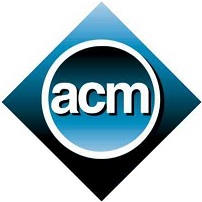دانلود ترجمه مقاله الگوی پیش بینی تاثیر معیارهای قابل کنترل در انفجار flyrock در معادن – مجله الزویر
| دانلود رایگان مقاله انگلیسی + خرید ترجمه فارسی
|
|
| عنوان فارسی مقاله: |
توسعه یک مدل تجربی برای پیش بینی اثرات پارامترهای قابل کنترل انفجار در فاصله پرتاب سنگ (flyrock) در معادن سطحی |
| عنوان انگلیسی مقاله: |
Development of an empirical model for predicting the effects of controllable blasting parameters on flyrock distance in surface mines |
|
|
| مشخصات مقاله انگلیسی (PDF) | |
| سال انتشار | ۲۰۱۲ |
| تعداد صفحات مقاله انگلیسی | ۸ صفحه با فرمت pdf |
| رشته های مرتبط با این مقاله | مهندسی معدن، ژئوفیزیک و زمین شناسی |
| گرایش های مرتبط با این مقاله | اکتشاف معدن، استخراج معدن، مکانیک سنگ، ژئوالكتریک و زمین شناسی ساختمانی |
| مجله | مجله بین المللی مکانیک سنگ و علوم معدن (International Journal of Rock Mechanics & Mining Sciences) |
| دانشگاه | دپارتمان معدن، نفت و مهندسی ژئوفیزیک، دانشگاه صنعتی شاهرود |
| کلمات کلیدی | فاصله پرتاب سنگ، پارامترهای کنترل انفجار، تجزیه و تحلیل ابعادی، مدل سازی استوکاستیک، روش مونته کارلو (MC)، تجزیه و تحلیل میزان حساسیت |
| شناسه شاپا یا ISSN | ISSN ۱۳۶۵-۱۶۰۹ |
| رفرنس | دارد |
| لینک مقاله در سایت مرجع | لینک این مقاله در سایت ساینس دایرکت |
| نشریه الزویر | Elsevier |
| مشخصات و وضعیت ترجمه فارسی این مقاله (Word) | |
| تعداد صفحات ترجمه تایپ شده با فرمت ورد با قابلیت ویرایش و فونت ۱۴ B Nazanin | ۲۵ صفحه |
| ترجمه عناوین تصاویر و جداول | ترجمه نشده است |
| ترجمه متون داخل تصاویر و جداول | ترجمه نشده است |
| درج تصاویر در فایل ترجمه | درج شده است |
| درج جداول در فایل ترجمه | درج شده است |
| درج فرمولها و محاسبات در فایل ترجمه به صورت عکس | درج شده است |
- فهرست مطالب:
چکیده
۱ معرفی
۲ مطالعه موردی: معدن مس سونگون
۲ ۱ توضیحات معدن
۲ ۲ جمع آوری داده ها
۳ توسعه یک مدل پیش بینی flyrock
۳ ۱ معادله Flyrock
۳ ۲ کارآرئی معادله پرتاب سنگ (flyrock)
۴ روش مدل سازی تصادفی برای پیش بینی محدوده flyrock
۴ ۱ زمینه
۴ ۲ شبیه سازی مونت کارلو
۴ ۳ تجزیه و تحلیل حساسیت
۵ بحث و نتیجه گیری
- بخشی از ترجمه:
Flyrock می تواند یک خطر جدی درارتباط با انفجارباشد. بیشترحوادث آتشباری سطحی نتیجه پرتاب سنگ بیش ازاندازه دورتر ازناحیه محافظت شده میباشد. علت بسیاری از آسیب تجهیزات در معدن، معدن سنگ یا سایت ساختمان flyrock است. بنابراین، پیش بینی دقیق flyrock میزان قابل توجهی ازمشکلات را کم میکند. پیش بینی Flyrock یک مسئله پیچیده در استخراج صنعتی است چرا که پارامترهای بسیاری flyrock را تحت تاثیر قرار میدهند که می توانند به طور کلی به دو دسته تقسیم شوند: پارامترهای قابل کنترل و غیرقابل کنترل. ثانیا، بسیاری از این پارامترها به دلیل تنوع در پارامترهای انفجار نامعلوم هستند.
هدف از این مطالعه پیش بینی فاصله flyrock و اثرات پارامترهای قابل کنترل انفجار بر روی آن با استفاده از مدل سازی تصادفی بود. در این مطالعه، برای پیش بینی فاصله flyrock یک معادله ی تجربی و روش MC استفاده شد. معادله تجربی Flyrock بر اساس داده های جمع آوری شده از رخدادهای انفجار در معدن مس سونگون با تجزیه و تحلیل بعدی توسعه داده شد. این مدل از پارامترهای مهم قابل کنترل انفجار، مانندburden ، spacing، گلگذاری، طول چال، قطر چال، خرج ویژه، و متوسط خرج در هر چال تشکیل شده است. همچنین، تجزیه و تحلیل حساسیت برای تعیین اثرات پارامترهای قابل کنترل انفجار در فاصله flyrock انجام شد. نتایج حاصل از این مطالعه ارائه شده را می توان به شرح زیر توضیح داد:
۱٫ برای معادله تجربی flyrock، ضریب تعیین ((R2)، VAF و شاخص RMSE به ترتیب ۸۳٫۳۸٪، ۸۳٫۳۸٪ و ۶٫۰۹ به دست آمد، به طوری که این معادله به اندازه کافی می تواند فاصله flyrock با دقت قابل قبول پیش بینی کند.
۲٫ این مهم است که توجه داشته باشید که اعتبار معادله ارائه شده توسط دسترسی داده ها وانواع نمونه، که برای بدست آوردن معادله استفاده می شود، محدود شده است. بنابراین، به شدت توصیه می شود که آن معادله قابل اعمال به تمام معادن سطحی فرض نشده است. معادلات مشابهی نیز می تواند در سایر معادن سطحی توسعه داده بشود، که یک روش استخراج مشابه به این گزارش داشته باشند به منظور پیش بینی فاصله flyrock بکار گرفته شود.
۳٫ مقایسه نتایج شبیه سازی و مقادیر اندازه گیری شده از flyrock در این زمینه، نشان می دهد که شبیه سازی MC می تواند فاصله flyrock را نسبتا به خوبی پیش بینی کند. متوسط طبیعی flyrock 72.43 متر است در حالی که مقدار پیش بینی شده ۸۱٫۴۴ متر است.
- بخشی از مقاله انگلیسی:
Introduction Blasting is a primary means of extracting minerals and ores at surface mining operations. The main purpose of blasting operations is rock fragmentation and requires a large amount of explosives. The explosives release a large amount of energy during explosion, which only 20–۳۰% of it is utilized for breaking and displacement of rocks and the rest of it is wasted in the form of environmental side impacts [1]. Flyrock is one of these environmental impacts that is defined as the rock propelled beyond the blast area by the force of an explosion [2]. The flyrock of these rock fragments beyond the allowable limits leads to facility and structure damages [3]. Also, main reason of many fatal and non-fatal blasting accidents in surface mining is excessive flyrock beyond the protected blast zone [4–۸]. According to Fig. 1, flyrock can result from three key mechanisms which are explained briefly in the following [5,9,10]: Face burst occurs when explosive charges intersect or are in close proximity to major geological structures or zones of weakness. The high-pressure gases of the explosives jet along the weakness zones (paths of low resistance) and generate noise, airblast, and flyrock. In these circumstances, burden conditions usually control flyrock distances in front of the face. Cratering occurs when the ratio of stemming height to blasthole diameter is too small or the collar rock is weak. In this situation, flyrock can be projected in any direction from a crater at the hole collar. Rifling occurs when stemming material is inefficient or is absent. Blast gases can stream up the blasthole along the path of least resistance resulting in stemming ejection and sometimes ejection of the collar rock as harmful flyrock. During recent years, various approaches have been developed for flyrock analysis in surface mines that can be divided into two categories. One approach is the mechanistic modeling in which the physics mechanisms are clearly identified [10–۱۴]. The other approach is the empirical approach, which involves no details of physics mechanisms and the results in an empirical equation are obtained by some ‘‘best statistical’’ analysis of measured flyrock range data [3,15,16]. There are advantages and disadvantages of both approaches. The advantage of mechanistic models is that they include universal mechanisms such as trajectory shape, air drag, rock bounce etc., which are not site dependent. The disadvantage of these models is that in order to calculate the flyrock range, they require inputs such as launch angle, launch velocity and fragment mass, which are difficult to obtain, and are site dependent to some degree. The advantage of empirical models is that they directly give the flyrock range via a single and simple equation. The main disadvantage of empirical models is that they are site dependent, simply because the statistical fits are only done for the site-measured range of data. Of course there are also models that have an element of both mechanistic and empirical [9]. Nowadays, application of artificial intelligence techniques such as artificial neural network and fuzzy logic is increasing in this field [17–۲۰]. Additional studies on flyrock phenomena can be found in [5,8,21–۲۹]. Based on these studies, flyrock occurrence and intensity is influenced by controllable and uncontrollable parameters. Controllable parameters can be changed by the blasting pattern, while uncontrollable parameters are natural and cannot be changed. The main controllable parameters causing flyrock are insufficient burden, improper delay timing, inadequate stemming, inaccurate drilling, and unwarranted powder factor. Whereas, poor geological and geotechnical conditions specially existence of loose rock in the upper part of the blast hole are considered to be the uncontrollable parameters affecting flyrock. The detrimental effects of flyrock are unavoidable and cannot be completely eliminated, but certainly can be minimized up to a permissible level to avoid damage. One of the effective approaches to control and prevent flyrock accidents is prediction of flyrock range and effects of blasting parameters on it. This enables mining engineers and contractors to locate the workers and equipments in a safe area and distance so hazards due to flyrock can be minimized. For this purpose, various empirical models were developed for prediction of flyrock distance that most of them are based on blasthole diameters and specific charge [3,11,13,30]. These methods do not include all effective parameters on flyrock, consequently they have very low predictive capacity. On the other hand, accurate prediction of flyrock is very difficult because of uncertainty in blasting parameters. In order to overcome these shortcomings, in this paper a stochastic model for prediction of flyrock distance in surface mines is developed. This model takes into account the uncertainty arising from variability in blasting parameters and uses Monte Carlo (MC) method for stochastic analysis. It is clear that for performing MC simulation an empirical equation is necessary, so at first this equation is established using dimensional analysis. This equation is developed based on the most effective controllable blasting parameters on flyrock, which were collected from blasting operations in Sungun copper mine located in the northwest region of Iran. Then, to analyze the effect of each controllable parameter on flyrock range, sensitivity analysis is conducted.
| دانلود رایگان مقاله انگلیسی + خرید ترجمه فارسی
|
|
| عنوان فارسی مقاله: |
الگوی پیش بینی تاثیر معیارهای قابل کنترل در انفجار flyrock در معادن |
| عنوان انگلیسی مقاله: |
Development of an empirical model for predicting the effects of controllable blasting parameters on flyrock distance in surface mines |
|
|


